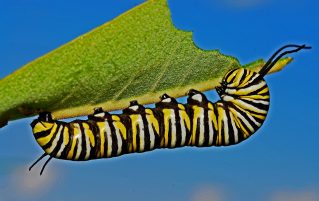

Plants have some amazing ways of surviving – and the adaptations of their leaves are very important in their survival. All plants need water, but too much water can be a dangerous thing! Mould grows on leaves if they get too wet. In the rain forest, leaves have adapted in different ways to cope with exceptionally high rainfall. Some leaves are waxy and thick – allowing water to fall straight off them and down to the roots. Others have drip tips that act like a spout, allowing extra water to dribble off. Some plants and trees even have leaves that catch rain as it falls and hold onto it. These leaves absorb the water slowly as and when the plant needs it. They may also resist mould more easily than other leaves.
But there are some even more fascinating adaptations.
A species of pitcher plant in Borneo, has a mutually beneficial relationship with bats. The shape of the plant allows it to work as an echo reflector, reflecting the sound bats make back at them. This helps the bats to find them, and somewhere to sleep after a long night flying around! In turn, the pitcher plant extracts nutrients from the bat poo. This is very much appreciated, as the pitcher plants grow in soil which is low in nutrients.
Scientists have also discovered that an Arabidopsis plant will respond defensively when the sound of caterpillars munching away is played to them. In order to protect themselves, they produce lots of mustard oil in their leaves, a chemical which caterpillars do not like.
Or how about the dodder vine, a parasitic plant which depends on a host plant to survive. It actually smells its prey! The vine is sensitive to chemicals in the air, clearly preferring some smells. For example, it will choose tomatoes over wheat! The vine detects the chemicals produced by the tomato plant, and sends a tendril out towards it. The tendril wraps itself around the tomato plant- and steals the nutrients within it!
GCSE Science students – you need to be able to describe how leaves adapted for their function. Our guide, “How to work with Adaptations of Leaves” can help. Included, as always are questions to try, and answers to check your understanding.
To see the guide, click on the picture below.
If you found this useful and think you would benefit from some additional help, please contact us.
